Abstract
Statement of problem
Use of all-ceramic prostheses fabricated with CAD/CAM systems is increasing in the dentistry. Marginal fidelity in production of all-ceramic restoration has important clinical implications and is a key consideration issue in CAD/CAM production as well.
Material and methods
On 56 patients treated with Procera® system Allceram Crown at Dankook Dental Hospital, marginal discrepancies of 101 abutments were measured by stereomicroscope at coping and final restoration stages. Paired t-test and one-way analysis of variance on marginal discrepancy data were conducted to determine the presence of significant differences between measurement and measuring point stages.
Results
Marginal discrepancies of final restoration (45.82 ± 30.84 ㎛) were lower than alumina coping (53.84 ± 38.83 ㎛). Furthermore, the differences were found to be statistically significant at 95% confidence level. Anterior marginal discrepancies were lower than posterior marginal discrepancies, but they were not statistically significant. Lingual marginal discrepancies were higher than other measurement sites, and the differences were found to be statistically significant at 95% confidence level.
REFERENCES
1.Godacre CJ., Campagni WV., Aquilino SA. Tooth preparations for complete crowns: An art form based on scientific principles. J Prosthet Dent. 2001. 85:363–76.
2.Brecker SC. Porcelain baked to gold; a new medium in prosthodontics. J Prosthet Dent. 1956. 6:801–10.
3.Goodacre CJ., Van Roekel NB., Dykema RW., Ullmann RB. The collarless metal-ceramic crown. J Prosthet Dent. 1977. 38:615–22.

4.Lehner CR., Mannchen R., Scharer P. Variable reduced metal support for collarless metal ceramic crowns: A new model for strength evaluation. Int J Prosthodont. 1995. 8:337–45.
5.Mclean JW., Jeansonne EE., Bruggers H., Lynn DB. A new metal-ceramic crown. J Prosthet Dent. 1978. 40:273–87.

6.Rizkalla AS., Jones DW. Mechanical properties of commercial high strength ceramic core materials. Dent Mater. 2004. 20:207–12.

7.Campbell SD., Pelletier LB., Pober RL., Giordano RA. Dimensional and formation analysis of a restorative ceramic and how it works. J Prosthet Dent. 1995. 74:332–40.

8.Sturdevant JR., Bayne SC., Heymann HO. Margin gap size of ceramic inlays using second-generation CAD/CAM equipment. J Esthet Dent. 1999. 11:206–14.

9.Besimo C., Jeger C., Guggenheim R. Marginal adaptation of titanium frameworks produced by CAD/CAM techniques. Int J Prosthodont. 1997. 10:541–6.
10.Denissen HW., Van der Zel JM., Van Waas MAJ. Measurement of the margins of partial-coverage tooth preparation for CAD/CAM. Int J Prosthodont. 1999. 12:395–400.
11.Rekow ED. High-technology innovations and limitations for restorative dentistry. Dent Clin North Am. 1993. 37:513–24.
12.Persson M., Andersson M., Bergman B. The accuracy of a high-precision digitizer for CAD/CAM of crowns. J Prosthet Dent. 1995. 74:223–9.

13.Kim IS., Kang DW. Marginal adaptation of the conical inner crown fabrication with CAD/CAM. J Kor Acad Prosthodont. 2002. 40:30–41.
14.Van Roekel NB. Electrical discharge machining in Dentistry. Int J Prosthodont. 1992. 5:114–21.
15.Valderrama S., Van Roekel N., Andersson M., Goodacre CJ., Munoz CA. A comparison of the marginal and internal adaptation of titanium and gold-platinum-palladium metal ceramic crowns. Int J Prosthodont. 1995. 8:29–37.
16.Gardener FM. Margins of complete crowns-literature review. J Prosthet Dent. 1982. 48:396–400.
17.Sulaiman F., Chai J., Jameson LM., Wozniak WT. A comparison of marginal fit of In-ceram, IPS Empress, and Procera Crowns. Int J Prosthodont. 1997. 10:478–84.
18.Denissen H., Dozic A., Van der Zel J., van Waas M. Marginal fit and short-term clinical performance of porcelain-veneered CICERO, CEREC, and Procera on-lays. J Prosthet Dent. 2000. 84:506–13.

19.Kim DK., Cho IH., Lim JH., Lim HS. On the marginal fidelity of all-ceramic core using CAD/CAM system. J Kor Acad Prosthodont. 2003. 41:20–34.
20.Shin SY. Procera system: a review of literature. J Kor Acad Stomatog Func Occ. 2006. 22:309–15.
21.Andersson M., Razzoog ME., Ode ′n A., Hegenbarth EA., Lang BR. Procera: a new way to achieve an all-ceramic crown. Quintessence Int. 1998. 29:285–96.
22.Holmes JR., Bayne SC., Holland GA., Sulik WD. Considerations in measurement of marginal fit. J Prosthet Dent. 1989. 62:405–8.

23.Kydd WL., Nicholls JI., Harrington G., Freeman M. Marginal leakage of cast gold crowns luted with zinc phosphate cement: an in vivo study. J Prosthet Dent. 1996. 75:9–13.
24.Christensen GJ. Marginal fit of gold inlay casting. J Prosthet Dent. 1996. 13:297–305.
25.Jenkins CB., Phillips RW. An evaluation of five inlay investing techniques employed with different types of wax patterns. J Prosthet Dent. 1971. 25:211–20.

26.Mclean JW. Polycarboxylate cements. Five years' experience in general practice. Br Dent J. 1972. 132:9–15.

27.Andersson M., Carlsson L., Persson M., Bergman B. Accuracy of machine milling and spark erosion with a CAD/CAM system. J Prosthet Dent. 1996. 76:187–93.

28.Mormann WH., Schug J. Grinding precision and accuracy of fit of CEREC2 CAD-CAM inlays. J Am Dent Assoc. 1997. 128:47–53.
29.Bindl A., Windisch S., Mormann WH. Full-ceramic CAD/CIM anterior crowns and copings. Int J Comput Dent. 1999. 2:97–111.
30.Persson M., Andersson M., Bergman B. The accuracy of a high-precision digitizer for CAD/CAM of Crowns. J Prosthet Dent. 1995. 74:223–9.

31.Small BW. Product review: all-ceramic system. Gen Dent. 1998. 46:446–50.
Table I.
Mean and standard deviation (SD) of total marginal discrepancies at coping stage and after build-up stage unit: ㎛
| Mean | SD | |
|---|---|---|
| Coping | 53.84 | 38.83 |
| After porcelain build-up | 45.82 | 30.84 |
Table II.
Mean and standard deviation (SD) and statistical analysis of marginal discrepancies at different measuring points unit: ㎛
Table III.
Mean and standard deviation (SD) and statistical analysis of marginal discrepancies at anterior and posterior abutments unit: ㎛




 PDF
PDF ePub
ePub Citation
Citation Print
Print


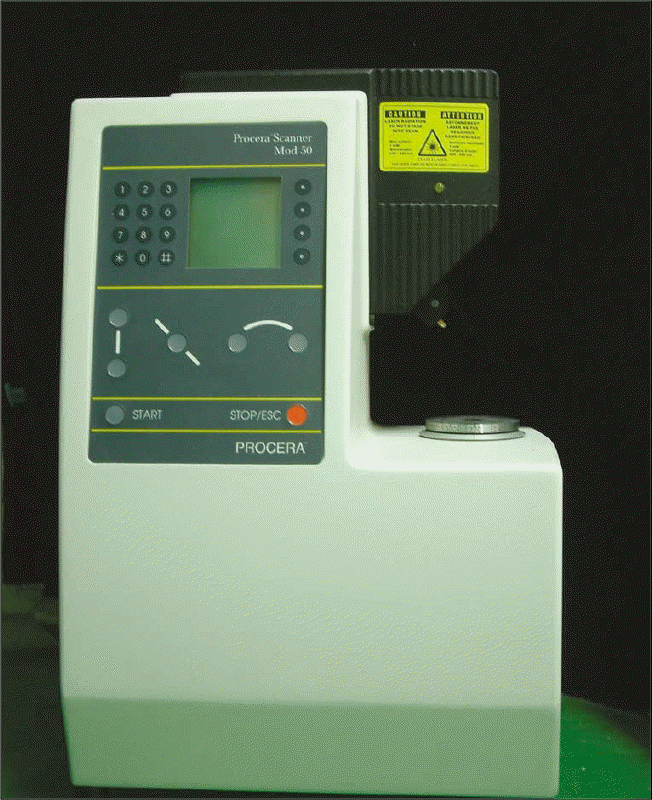
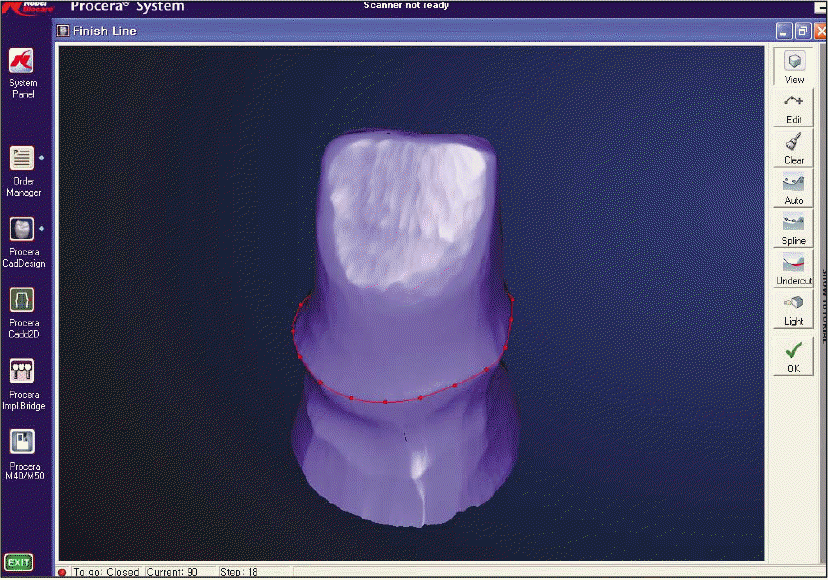
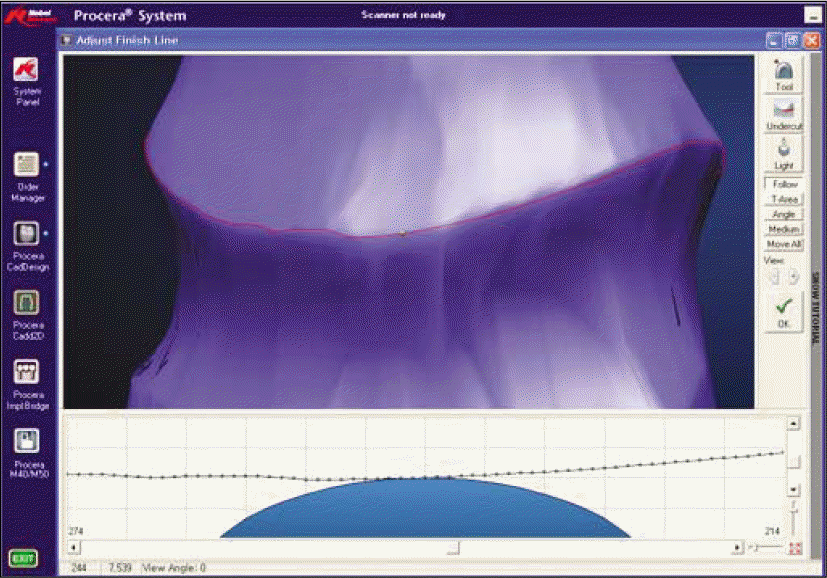
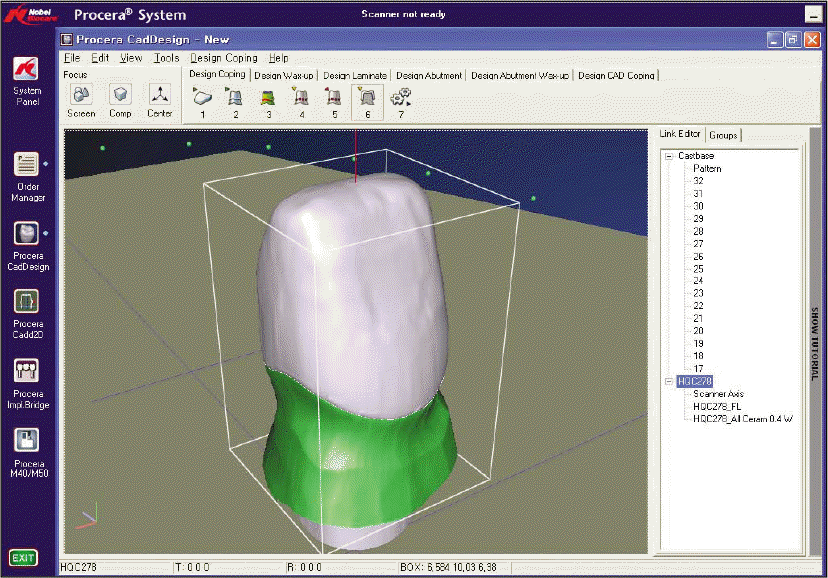
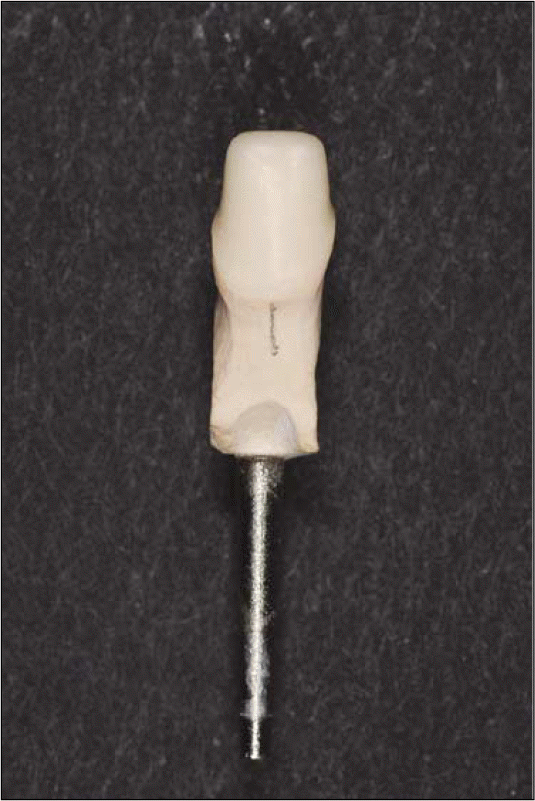
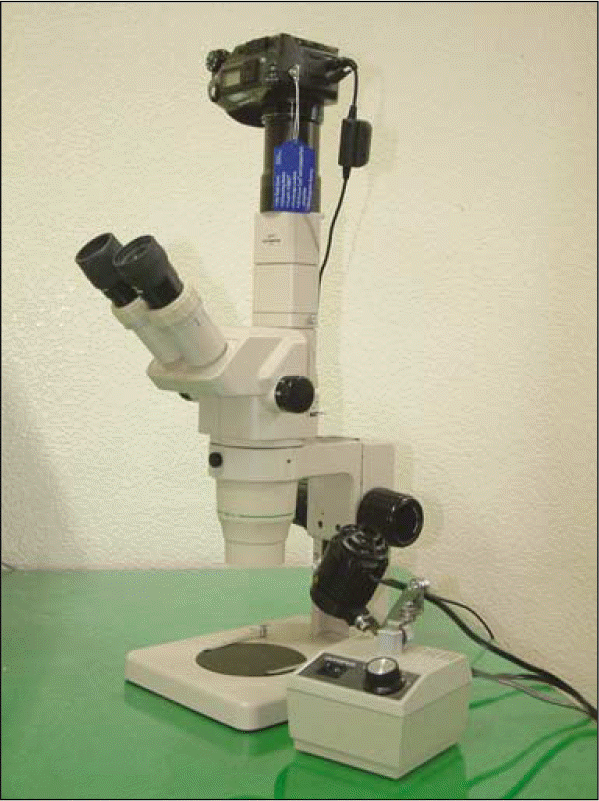
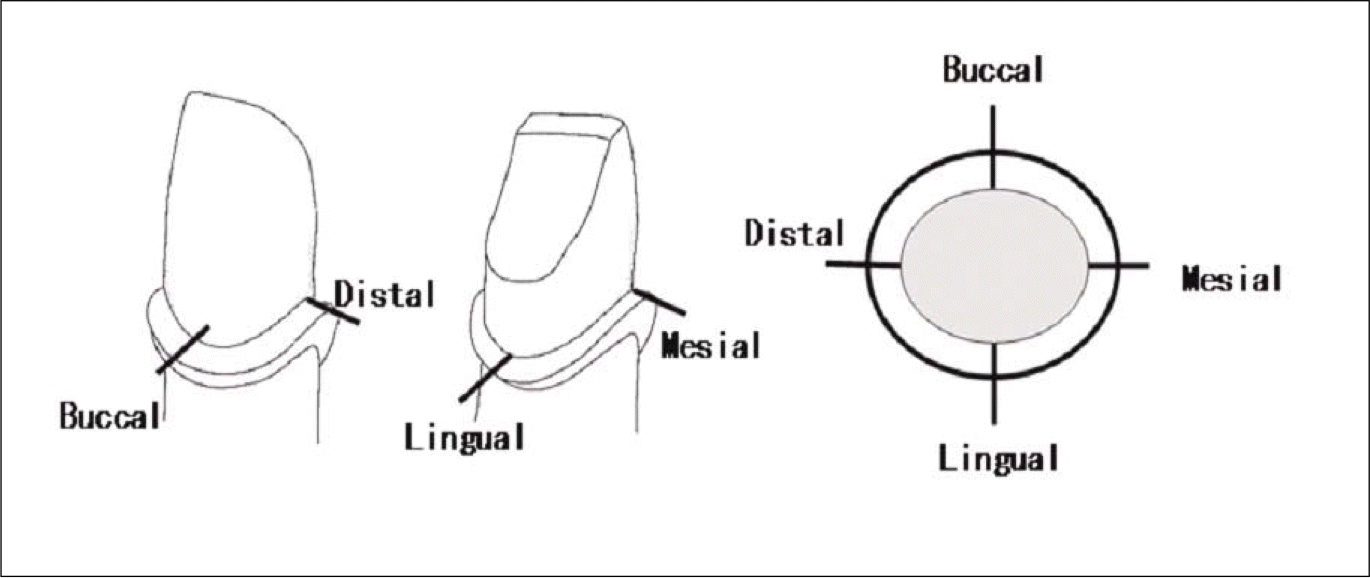
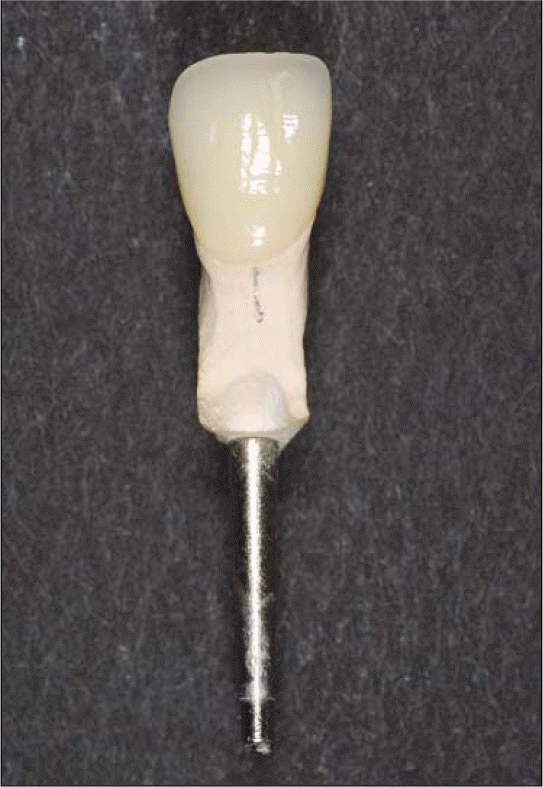
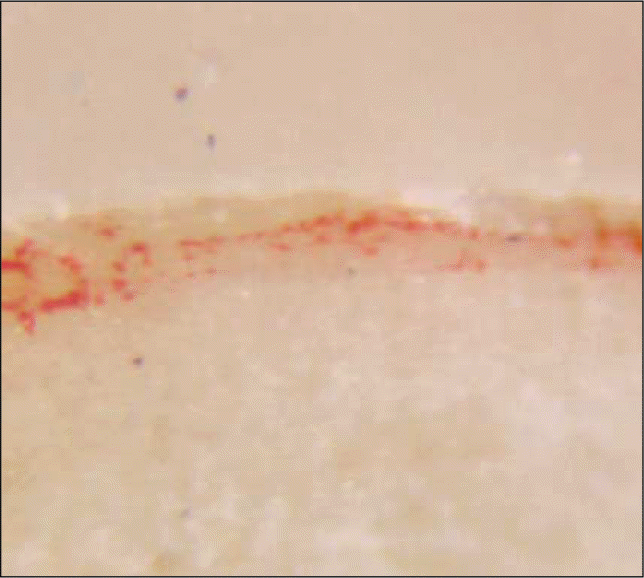
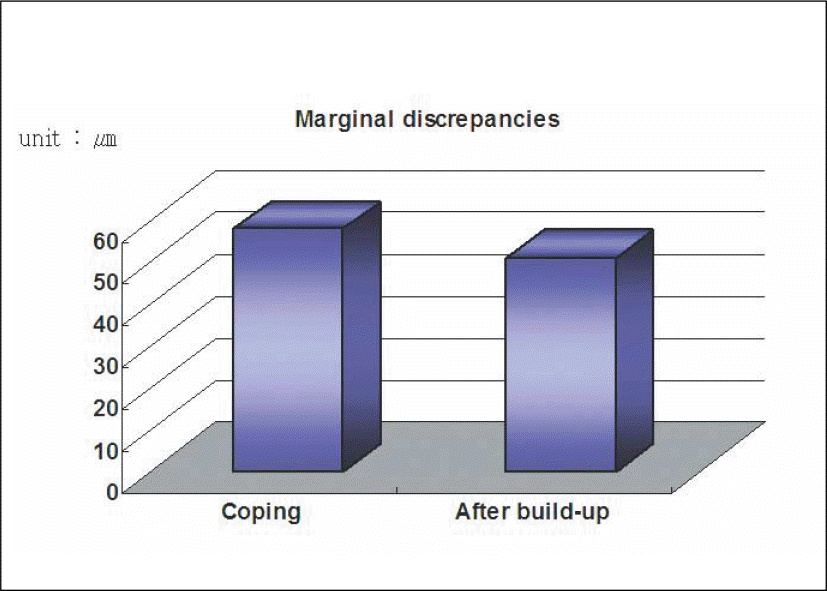
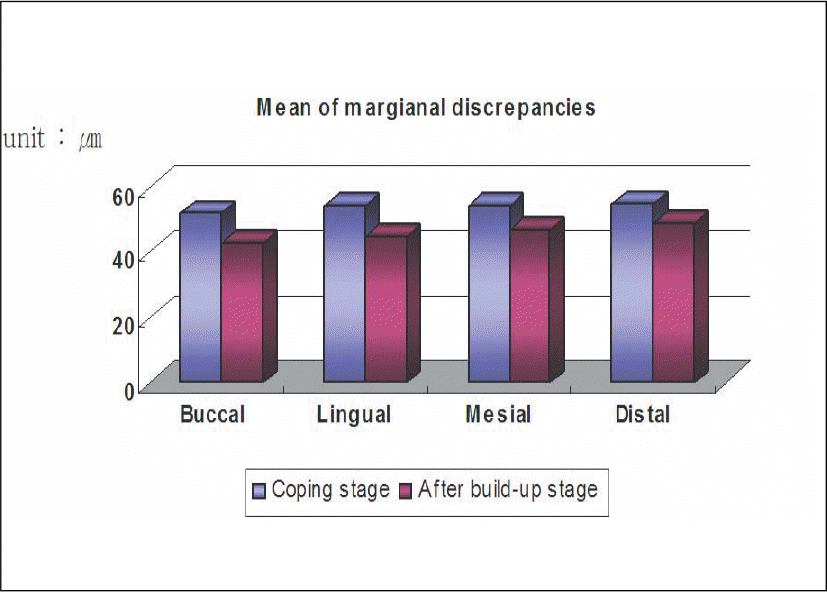
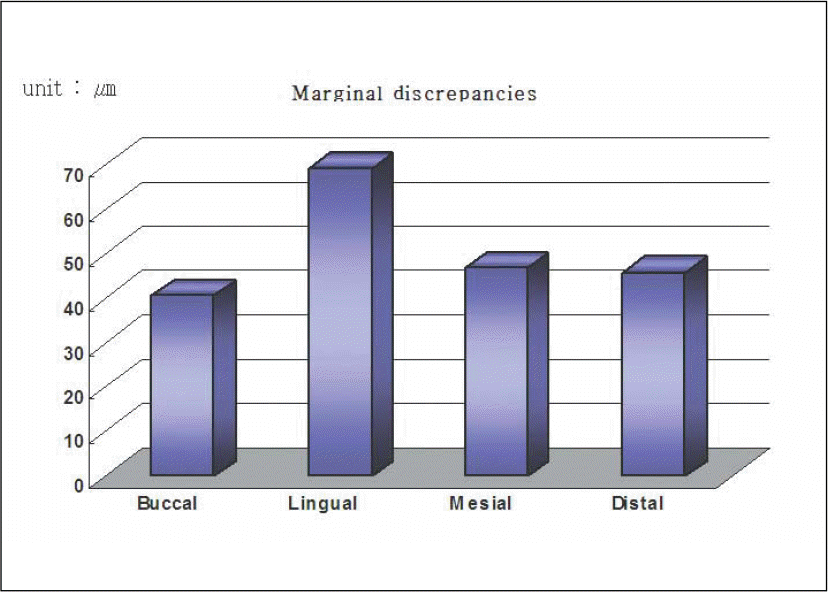
 XML Download
XML Download